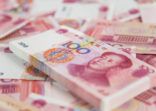The qualified domestic institutional investor program is one of the key channels permitting onshore investors to allocate RMB to overseas assets.
The State Administration of Foreign Exchange approved 132 onshore financial institutions for $90bn of quota, but stopped issuing new quota in March 2015 due to concern over capital outflows and the subsequent effect on the RMB currency.
But growing demand for offshore products is seen amid domestic market volatility, lower interest rates and yuan depreciation, according to Boston Consulting Group, whose view is shared by mainland wealth managers Jupai and Noah.
Less of a loser
QDII fund returns, while beating the average domestic equity fund, are on average still in negative territory year-to-date.
The average return of QDII funds hit -5.1% during the first half, according to data provider Eastmoney Choice.
By comparison, during the same period, funds that invest in domestic bonds and money market funds fetched roughly 1% return, while domestic equity funds returned an average -14.5%.
According to a Morningstar report, among the 130 QDII products, returns for the first half range from 15.6% (commodities type) to -10.2% (Asia ex-Japan equities). BOC S&P Global Resources EW Idx (QDII) recorded the highest return of 30.7%.
Net sales of QDII funds reached RMB 20bn ($3bn) in the first half, and now total assets in QDII funds are RMB 75.9bn, data from Eastmoney Choice shows.
Some 40 QDII funds have stopped subscription, including those managed by GF Fund Management, while another 50 funds halted large-scale investments, according to a Securities Times report.
Those available for sale are mainly focusing on Hong Kong stocks, which are relatively unattractive given the correlation to mainland China, the report noted.
















